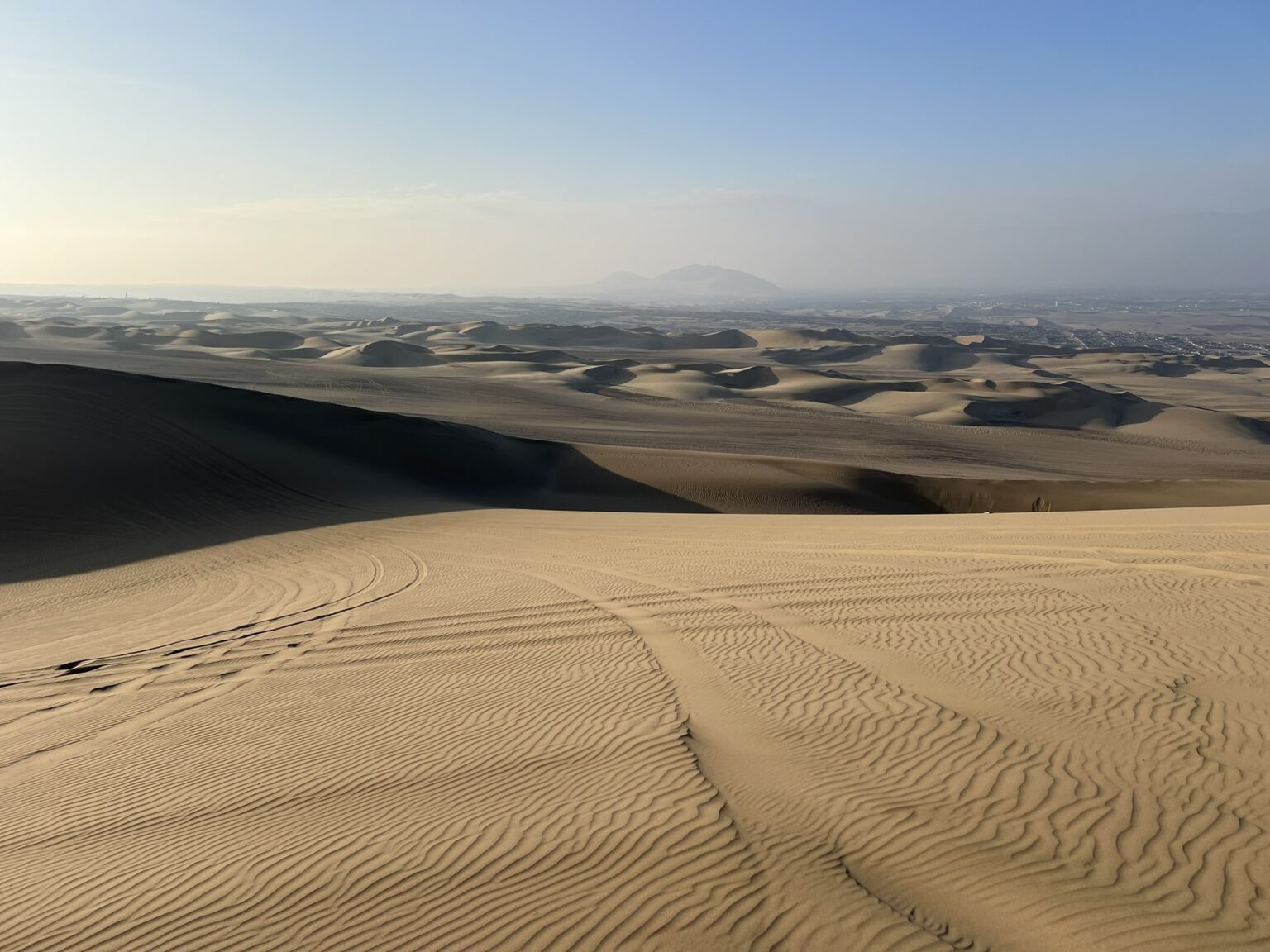Ica is a department of Peru located to the south of Lima. We spent time in Ica, Huacachina, Nazca, and Paracas experiencing incredible landscapes and learning more about ancient Peru.
Best Thing I Ate This Week
Cata Classica at Destileria La Caravedo
Pisco is a distilled liquor that according to the National Commision of Pisco can only come from the Peruvian regions of Lima, Ica, Arequipa, Moquegua, and Tacna. Most people are first introduced to the liquor in a cocktail called Pisco Sour, which is claimed to have been invented in Lima by an American. There is a heated rivalry between Peru and Chile with regards to this drink. In both countries we sampled many of the delicious cocktails, and while visiting Peru we were recommended by locals to visit some of the famous distilleries located in Ica.
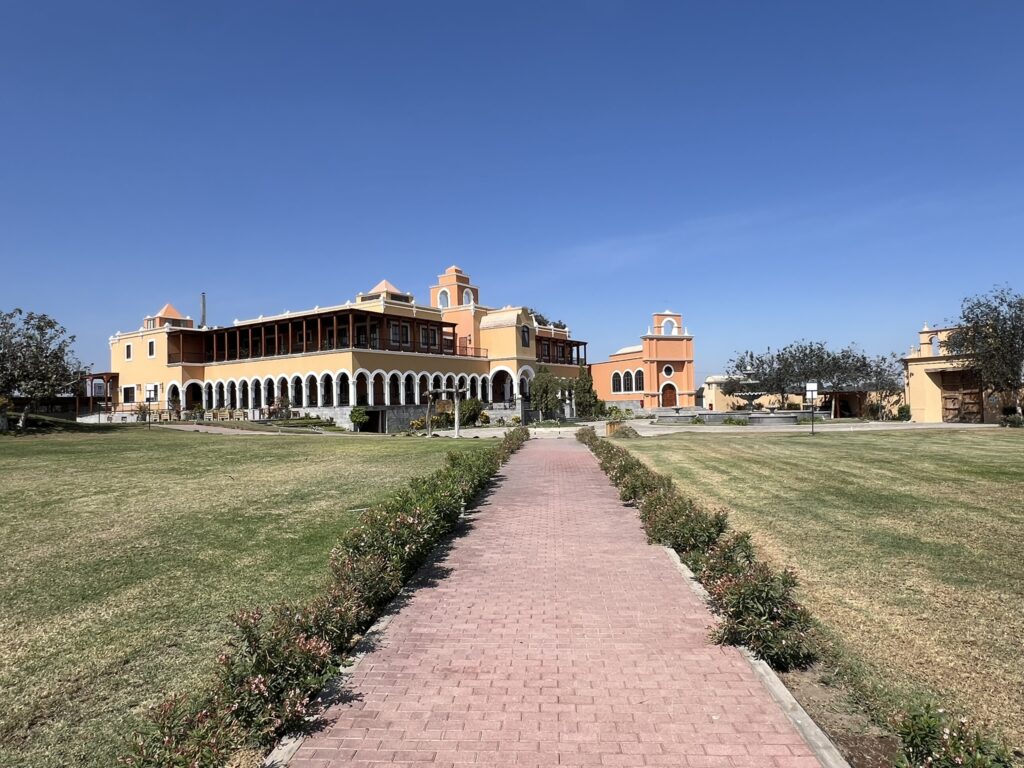
In actuality, the best thing I ate this week was the traditional Ica dish of Apulcra de Chanco con Sopa Seca, but given the prominence of Pisco in Peru, I will instead discuss the Cata Classica experience at Destileria La Caravedo. This distillery is known as the oldest operating one in the Americas and has been in production since 1684. Its most famous brand is Pisco Porton, which can be found at most prominent bars in Peru and was rebranded as Caravedo in the United States because people were confusing Pisco Porton with the popular Tequila brand Patron.
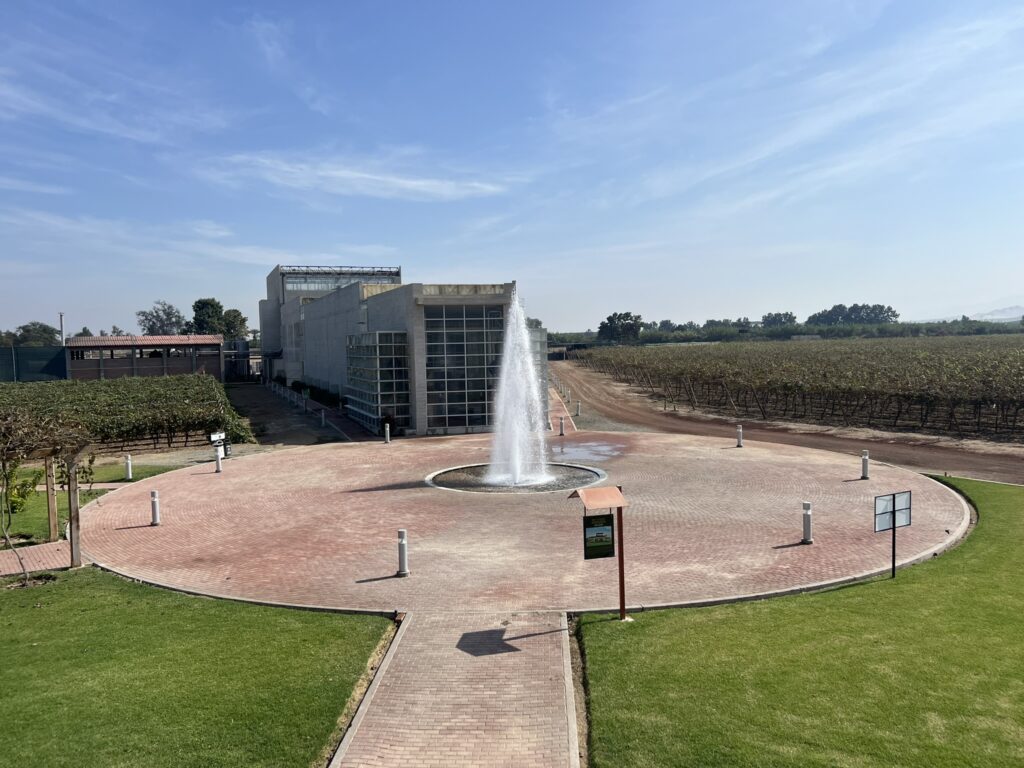
The Cata Classica experience includes a canned cocktail to enjoy as a guide takes you around the gorgeous property, which is where the original distillery was located. Today a beautiful hotel was constructed to mirror the Porton brand’s logo and the distilling process uses the most state-of-the-art equipment. The unique fact about Pisco is that it is only distilled from grapes one time. At Caravedo the master distiller works with his team to make sure the balance is perfect for every batch that is produced.
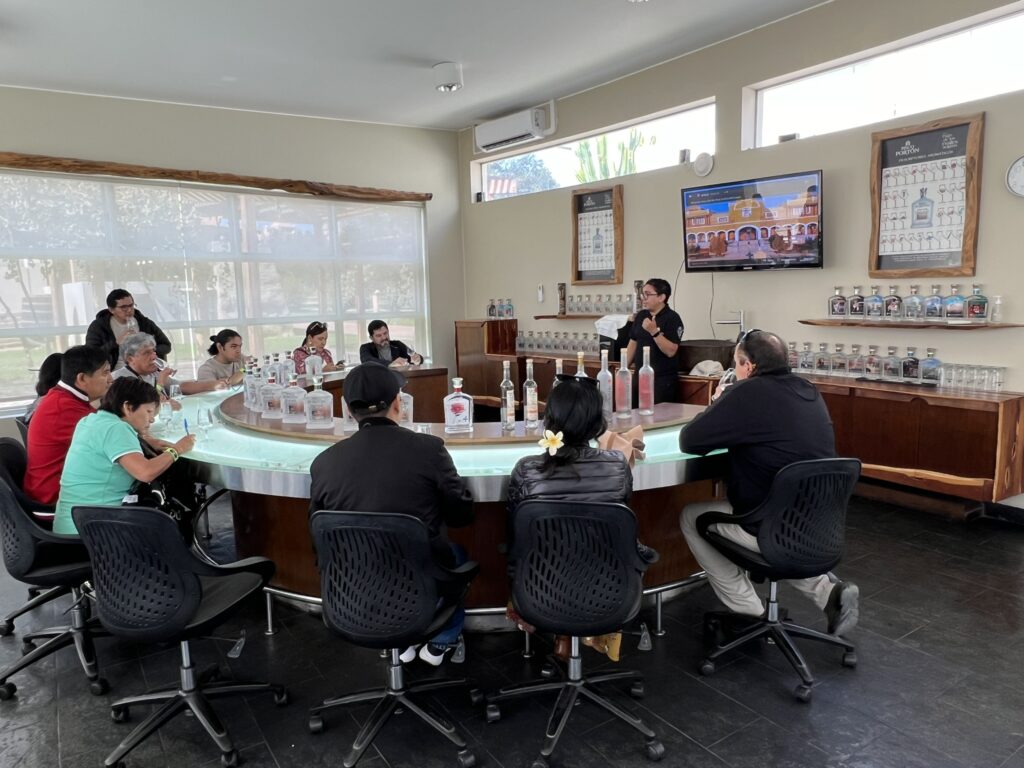
After touring the Hacienda grounds and production facility, the experience ends with an informational tasting of 3 different types of Pisco. One is pure pisco, another is a more floral pisco, and the last is the famous Pisco Porton. It is a fun experience to try the liquor from the source and see the incredible operations. Personally I prefer a Pisco Sour but will always think back to this experience seeing how the Pisco was made when I enjoy the cocktails in the future.
An Interesting Fact I Learned
Nazca lines were made by using math and moving stones
In the Ica department of Peru, the towns of Nasca and Paracas are both popular with tourists. They are located in an arid desert, which only receives a few millimeters of precipitation each year. These harsh climates created a unique circumstance that allowed for mysterious large drawings to be discovered in the 1900s, virtually in perfect condition from when they were created.
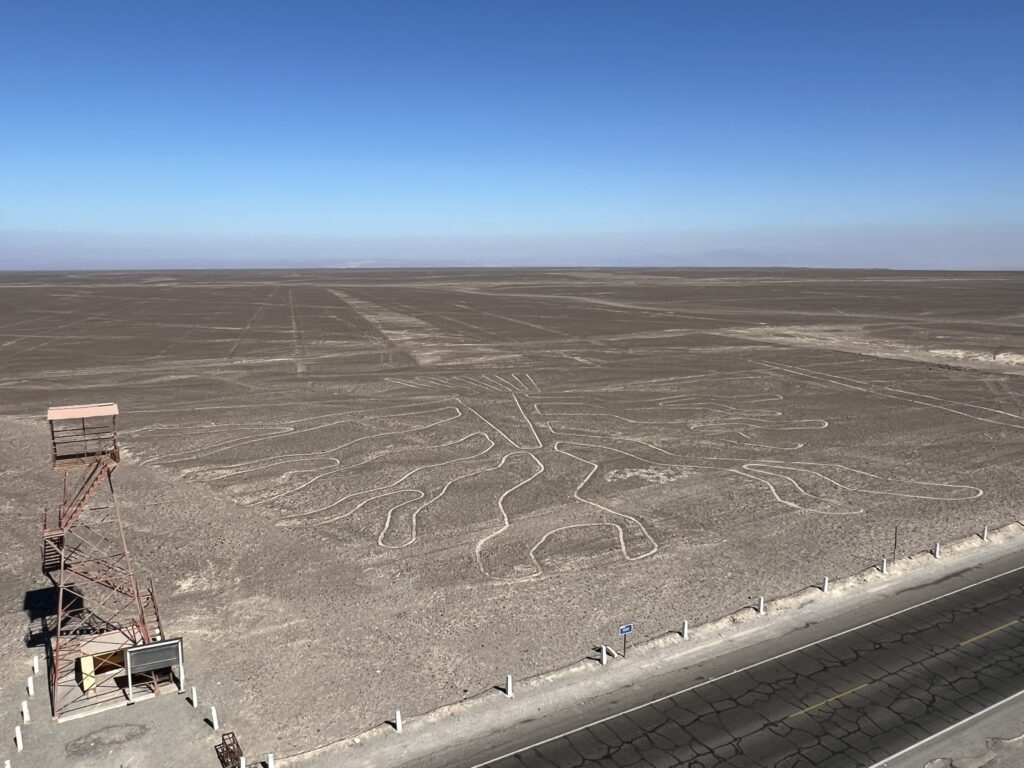
The Paracas civilization lived in the Ica region from around 800 BC to 100 BC and the Nazca civilization lived in that region from around 200 BC to 600 AD. Both civilizations created intricate, large-scale drawings on the ground. We were told that the drawings from the Paracas people were on hills and many times featured figures with large eyes that were representative of their hallucinogenic religious ceremonies, whereas the Nazcas were flat and did not include depictions with wide eyes. During our time in Ica, we were able to do an archaeological day trip to Nazca to learn more about these cultures and the amazing drawings found there.
Our guide first took us to Museo Maria Reiche where we had a guided tour of the former home and current museum dedicated to Maria Reiche. She was a mathematician who moved from Germany to Peru in the early 1900s. She, along with American historian Paul Kosok, is credited with discovering the lines. The guide told us that she found a monkey drawing that had only 9 fingers, and she also had only 9 fingers which led her to believe it was her destiny to study and preserve the lines.
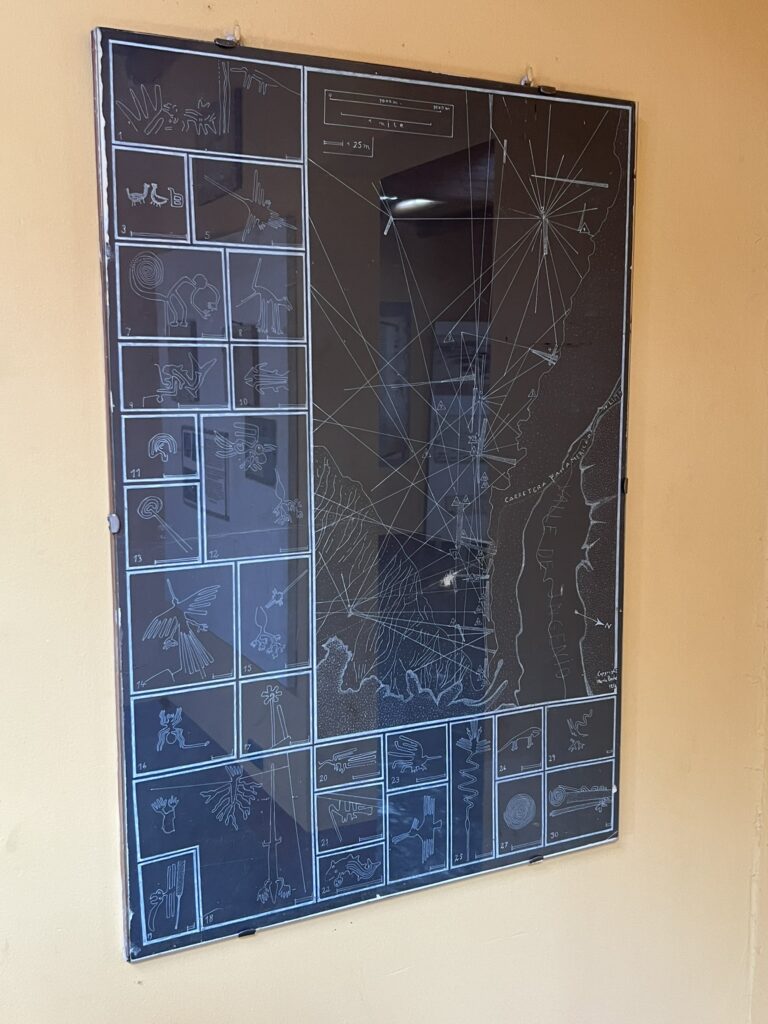
Maria’s expertise in mathematics helped her to map out the drawings from a ground point of view. Unlike today where there are ample opportunities to take tourist flights to see the lines from above, she did not have that ability for an aerial view of the lines until much later in life when she convinced the Peruvian government to photograph them from above. Based on those photographs, her mathematical drawings were confirmed. She believed that the drawings were tied to constellations but others believe they were part of important religious activities.
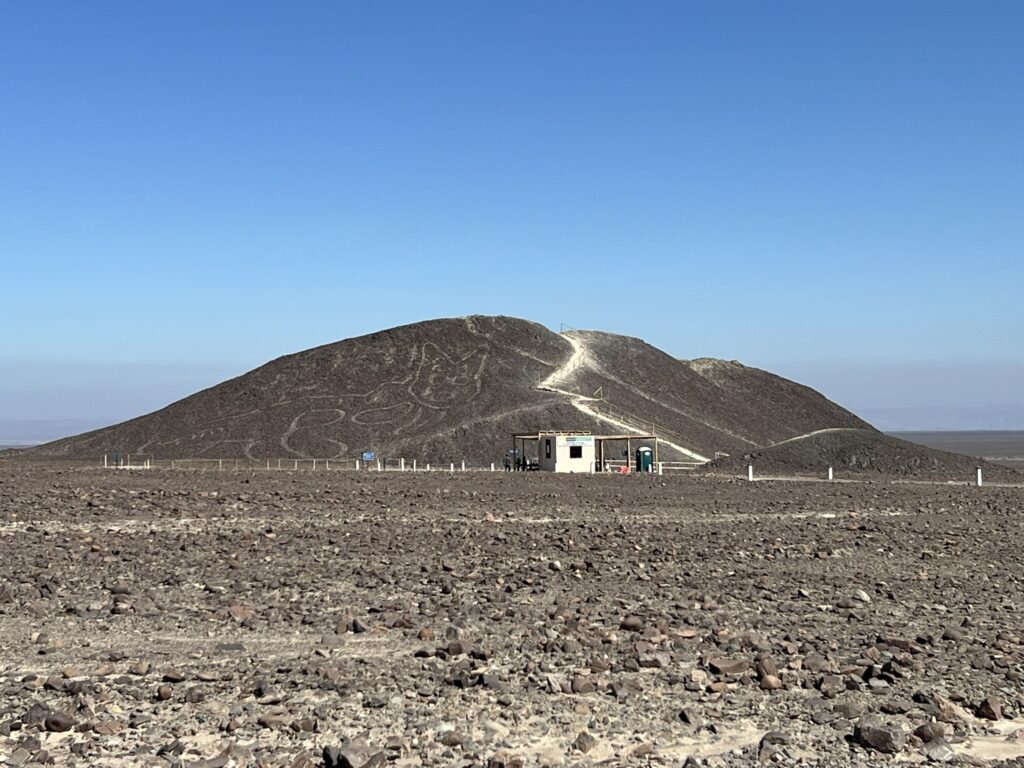
Most archeologists agree that the construction of the lines was a straightforward process. Using mathematics and small scale models, the civilizations would then mark off the drawing on the ground using sticks and ropes. Once that was completed, only a small amount of dark stones from the top layer of the ground needed to be removed to expose the light colored layer below. Since there is little to no rain in the region, the lines remained in the same state for hundreds of years where they can still be observed today. We went to an observatory funded by Maria Reich to see 3 of the Nazca drawings from above which were incredible. Many tourists choose to travel in small planes to fly above many more drawings and get an even better sense of the massive quantity and scale of these impressive figures.
My Travel Tip of the Week
Bring an extra pair of contacts when going on a day tour
While in Paracas, we signed up for a full day tour to visit the Ballestas Island and National Reserve of Paracas. The Ballestas Island tour was in a boat that went around Paracas Bay to observe the abundant marine life that has led the area to be called the Peruvian Galapagos. Additionally, we visited the Paracas Candelabra which is a drawing in the seaside cliff on the Paracas Peninsula with a disputed origin. Some people believe it was from the Paracas civilization and represented the San Pedro cactus which was used for hallucinogenic purposes by this culture.
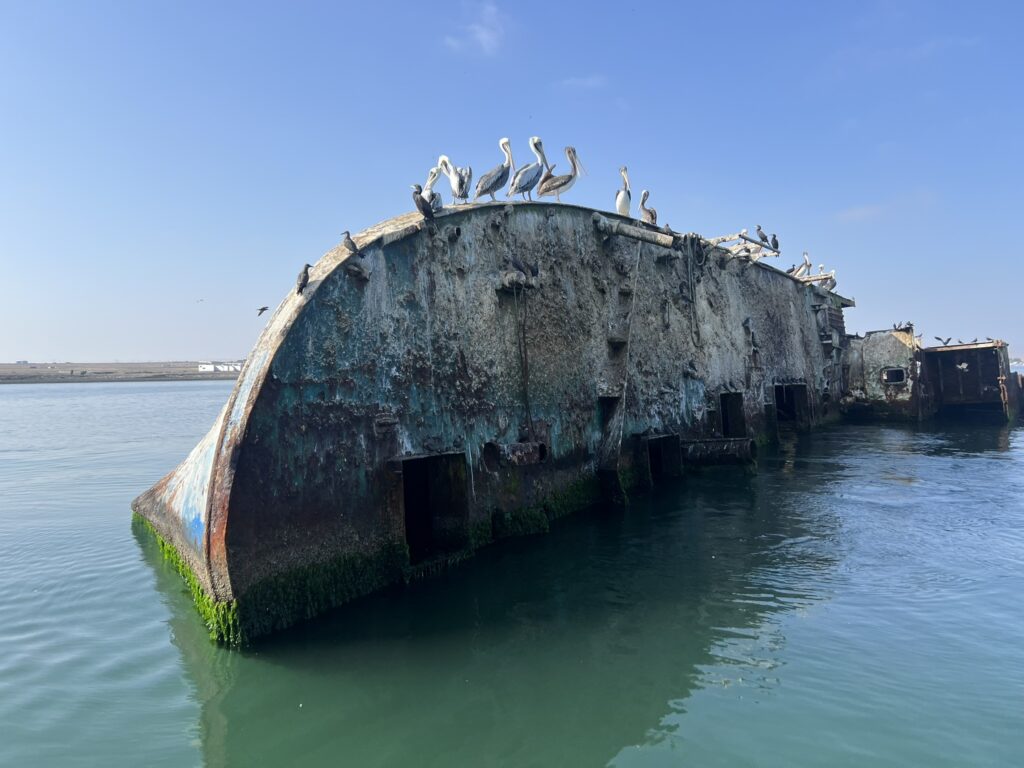
After a great time on the Bay of Paracas, we boarded a bus to travel to the National Reserve of Paracas. We stopped at beautiful viewpoints overlooking one of the few red-sand beaches in the world. After that, we relaxed at Playa La Mina, a beach that attracts large crowds from Lima during the summer months. Our final stop was at Lagunillas, and, while at the top of a viewpoint, my eye was irritated, which led to my contact falling out. Due to the wind, I could not put it back in.
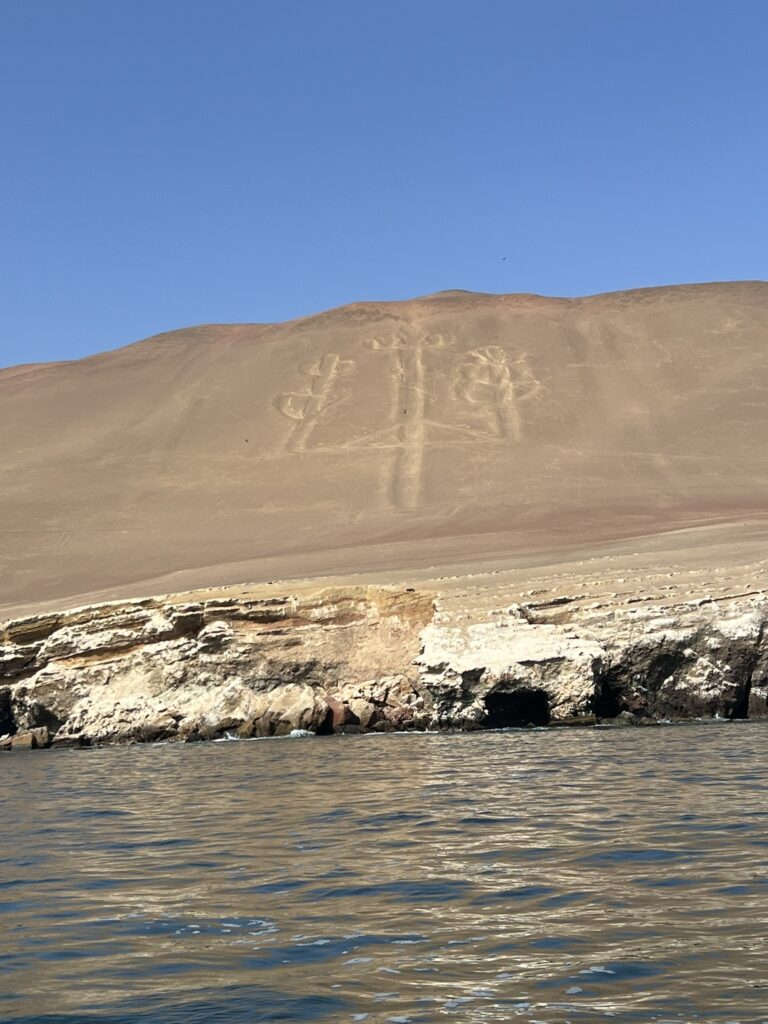
This left me with the choice of removing my second contact to have equal vision, or continuing with one eye and trying to manage two completely different visions. Luckily this was at the end of the tour, and we were headed back to town after the final Lagunillas viewpoint. If I had lost the contact lens earlier in the tour, the experience would have been far from enjoyable. It led me to realize that whenever I am doing a day tour it is a good idea to bring an extra contact just in case, and I would recommend those with bad vision to do the same.
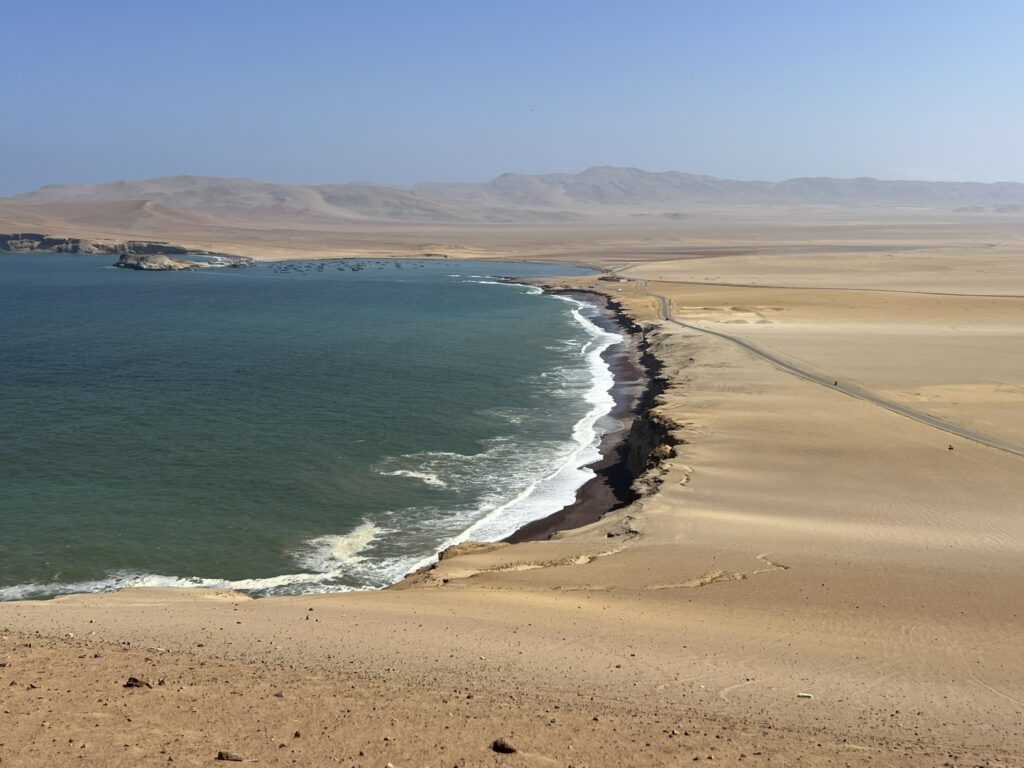
My Additional Anecdote This Week
Adventure tours can be a fun addition to your itinerary
I would not consider myself an adrenaline junkie and am generally more risk-averse when selecting activities. I do find roller coasters fun, and when the right opportunities present themselves, I do sign up for adventure activities. When visiting Huacachina the primary activity is to visit the massive dunes located just outside of the town. While there are opportunities to hike the dunes, the most popular activities are to ride in dune buggies through the dunes and go boarding on the sand dunes.
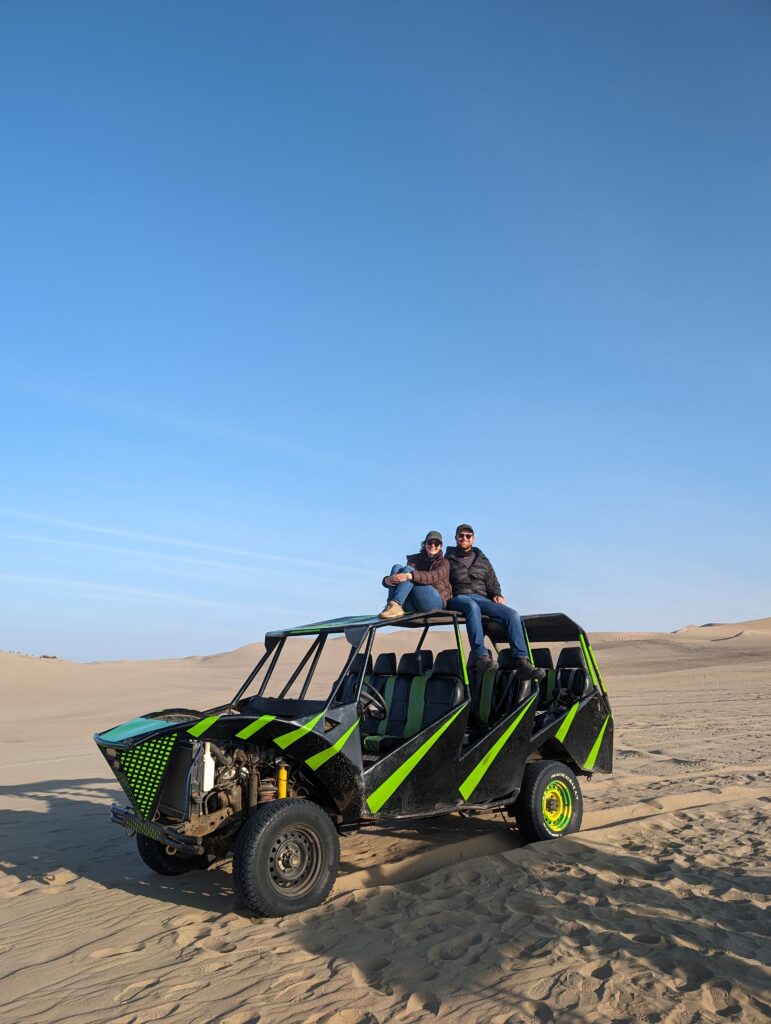
This activity was high on our list based on recommendations we received so we signed up for the Huacachina Adventure Tour at sunset. We did a brief hike from the town up the sand dune and came across numerous sand buggies parked waiting to take their 10 passengers on adventure trips in the dunes. Our driver made sure everyone was strapped into the harnesses, and once that was complete, slammed on the gas. The rush of flying over the sand dunes was invigorating, and by the non-stop screaming from the 4 people in the row behind us it caused a thrill for the other passengers as well. The feeling of going down the dunes felt like a roller coaster, and the never-ending stretch of sand dunes in the distance was beautiful.
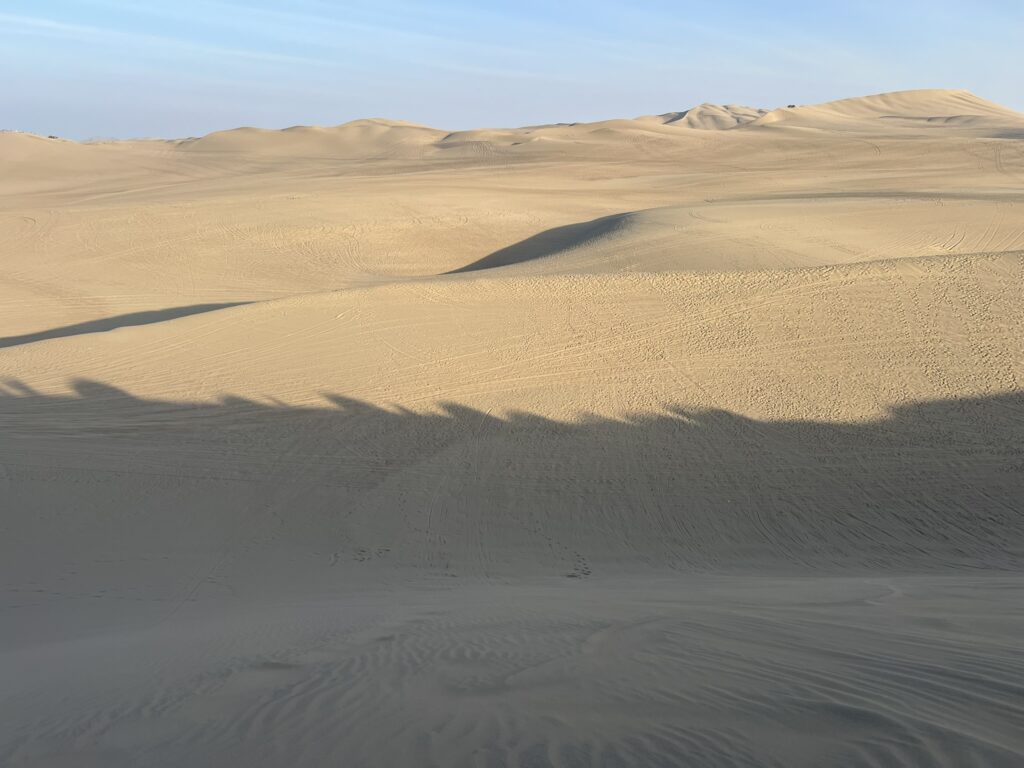
We made it to the top of some large sand dunes and were given a board that was then greased up. The group was instructed on how to sled down the hill on the sand dune. Looking down from the top it was terrifying, but once on the sand dune, it was no different than a big sledding hill of snow. It was a memorable experience to sled down sand, and after a few hills, it was time to go to a final stop for sunset. The ride to the final stop was no less thrilling than the first, but this time the orange glow of the sun going down reflected off the dunes. Watching the sun go down behind the horizon was a nice peaceful break before we had one final thrill ride across the sand dunes as night began to fall.
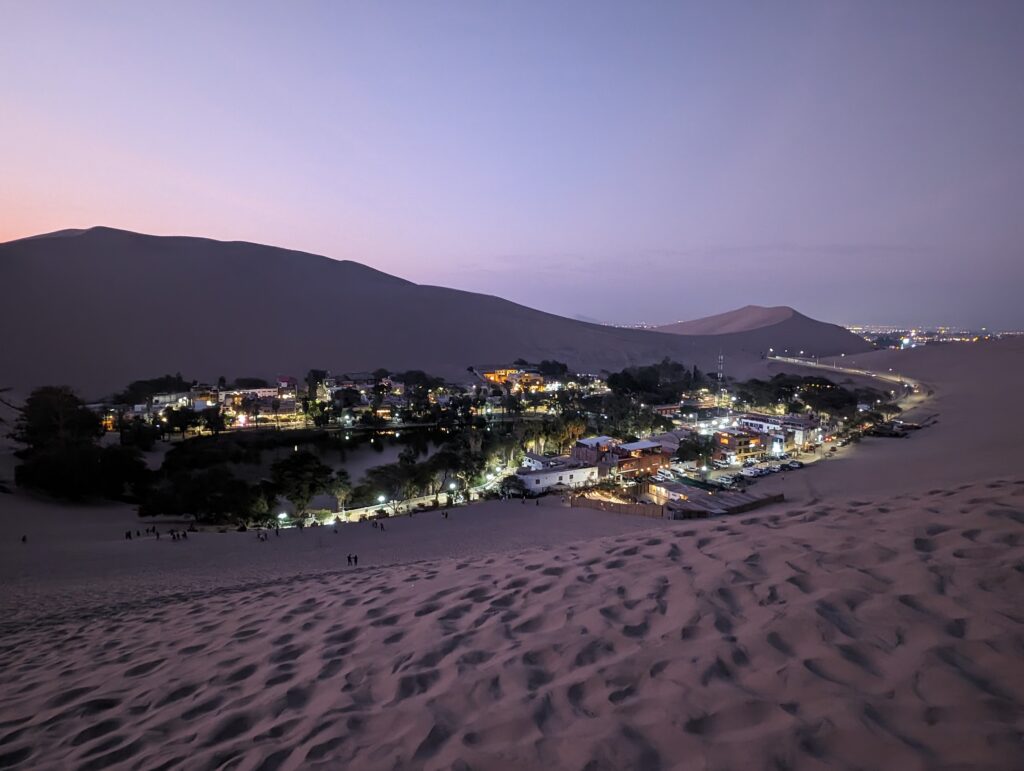
While I will still continue to be cautious about the adventure activities I do in the future, finding the right one like in Huacachina can be a great addition to a trip and lead to amazing memories.
How to Follow Our Travel:
We are actively posting on Instagram with more candid stories and updates about our travel.
If you want to get a weekly email of our latest blog postings, sign up below!
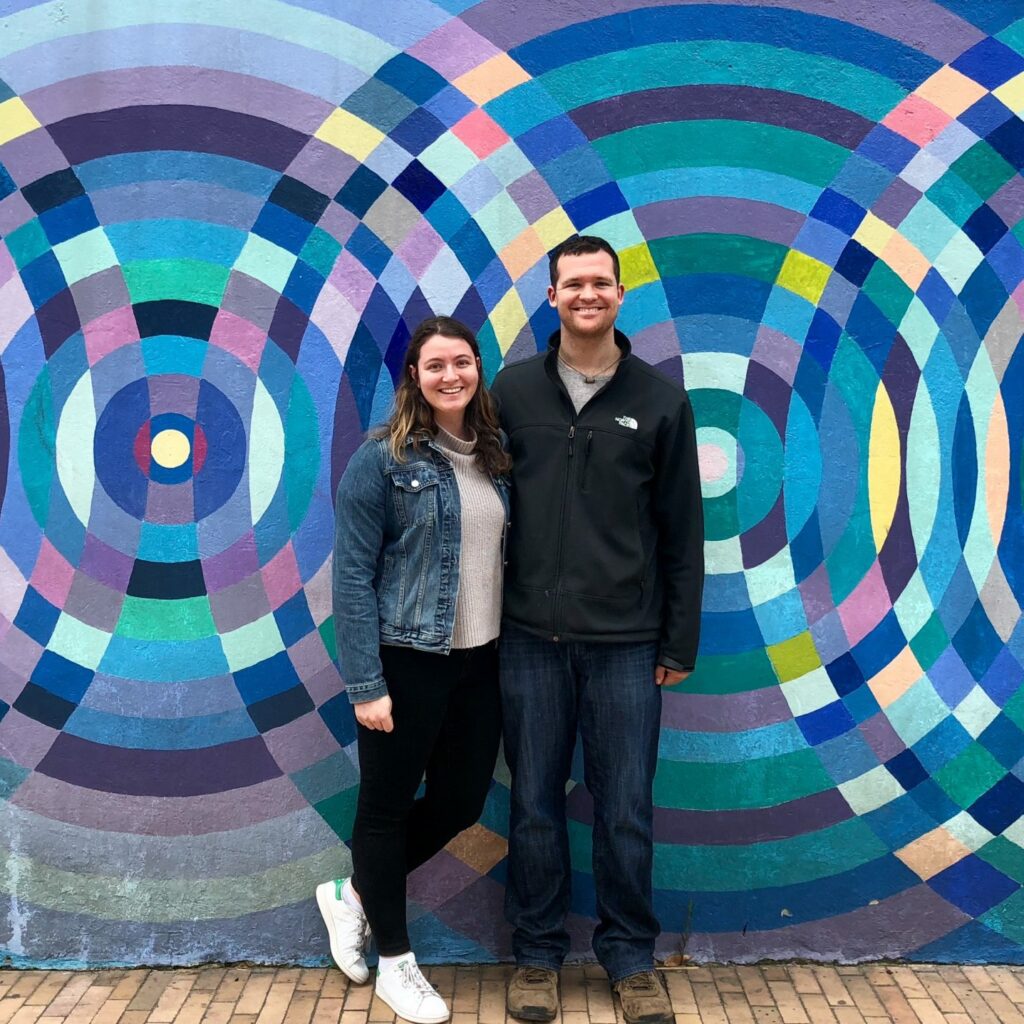
Hi! We Are Kevin and Melina!
We are Kevin and Melina, two avid travelers who have decided to take our hobby of traveling into our new lifestyle.
Follow along as we show you the highs and lows of planning, coordinating, and executing travel to help you make the most of every travel adventure.

